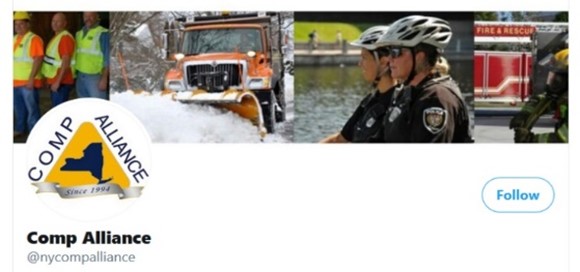This year, the National Fire Fighter Safety Stand Down campaign will focus on situational awareness as the foundation for good decision-making. A joint initiative of the International Association of Fire Chiefs (IAFC), the National Volunteer Fire Council (NVFC), the National Fire Protection Association (NFPA), and the Fire Department Safety Officers Association (FDSOA), this year’s Safety Stand Down program will take place June 19-25.
decision-making. A joint initiative of the International Association of Fire Chiefs (IAFC), the National Volunteer Fire Council (NVFC), the National Fire Protection Association (NFPA), and the Fire Department Safety Officers Association (FDSOA), this year’s Safety Stand Down program will take place June 19-25.
Responder agencies are encouraged to focus on training and education related to situational awareness as well as overall fire fighter safety programs. To assist with this training opportunity, the Comp Alliance will provide daily safety tips for our members, which focus on specialty fire department exposures. Fire fighting is a difficult and dangerous profession and calls for safety awareness and knowledge to minimize risks to all responders. These safety tips should be shared throughout your department and municipal administration as a process to become aware of hazardous exposures and collaborate about solutions to reduce the injury potential.
Daily Firefighter Safety Tips June 20-24
Tip # 1 - Injury Overview
The week of June 19-25 has been designated as National Safety Stand Down week by a joint initiative by several national fire safety commissions and councils. Responder agencies are encouraged to focus on training and education related to a variety of hazardous conditions which are most frequently encountered as part of the high-hazard job responsibilities of fire departments. To get started with the Comp Alliance’s week-long safety tips to focus on training and education for your fire fighters, let’s first review the areas where we see the most workplace injuries occurring for these specialty personnel.
commissions and councils. Responder agencies are encouraged to focus on training and education related to a variety of hazardous conditions which are most frequently encountered as part of the high-hazard job responsibilities of fire departments. To get started with the Comp Alliance’s week-long safety tips to focus on training and education for your fire fighters, let’s first review the areas where we see the most workplace injuries occurring for these specialty personnel.
Injuries to fire department staff can originate from several sources and conditions. The causes of fire personnel injuries can vary significantly but the process to control most of these workplace injuries is similar. You must maintain the wherewithal to observe the conditions around you. Develop situational awareness of your environment.
Slip, trip and fall incidents contribute to the most frequent workplace injuries. This is true for fire departments as it is for just about any municipal department today. Injuries from slips, trips and falls can be minor or severe, they can include trips over a crack in the walking surface, a fall down a staircase, or a fall inside a burning structure. Firefighter slip, trip and fall injuries occur most frequently at the fire house, as they spend most of their time at this location. Inspect your facilities for the following hazards:
- Uneven walking surfaces
- Raised cracks greater than a half-inch in the garage areas
- Frayed carpets
- Missing stair handrails
- Poor lighting
- Floor obstructions
At the accident scene, however chaotic it appears, avoid slips, trips and falls by maintaining order and accountability and keep the site clear of unnecessary obstructions. Add lighting to improve visibility, arrange hoses so they can be seen and avoided, and make firefighters aware of hazardous icy patches and clear them when possible.
Physical exertion-related injuries are also frequent among firefighters and generally occur during emergency response or training exercises. These can originate from various causes such as introducing sudden rigorous activities, response to unplanned events occurring in unfamiliar settings, engaging in forcible entries, operating charged hose lines, and others. Injuries include back issues from lifting, heart conditions from over-exertion or over-excitement, knee pain due to donning heavy turn-out gear, hand and arm injuries from overuse of heavy tools and hoses, and knee and back pain from assisting injured civilians. Prevention of such injuries includes frequent and controlled training programs, maintaining some semblance of physical fitness, identifying stressors to employees, use of co-workers to assist when needed, use and training with proper tools, and augment firefighters at the incident scene.
Perhaps the most severe injuries sustained by firefighters are burn and inhalation injuries. Responding to a fire emergency can introduce fire personnel to the inhalation of toxic smoke. Smoke inhalation causes acute life-threatening injuries and results in long-term lung and neurological damage. Burn and inhalation injuries can be caused by entering a fire scene without proper PPE, failure of air packs, injuries sustained within the fire scene without timely rescue, or a downed firefighter at the scene. Incident Command Leaders must maintain focus and awareness at all fire scenes and develop accountability systems for all personnel on-site.
Additional conditions facing firefighters which are likely to lead to injuries include mental and emotional stress, vehicle accidents, responding to emergency calls from the public, and dealing with hostile/aggressive crowds. Mental and emotional stress contributes to physical and mental fatigue and increases potential for injury. Monitor your fire department personnel for signs of mental or emotional stress and utilize your municipal Employee Assistance Programs (EAP) when assistance is needed. Enforce safe vehicle operation policies and standards. Utilize local law enforcement when necessary to avoid crowd interference with firefighting operations.
One common thread significant to the prevention of injuries reviewed above is the achievement of situational awareness, both in department leaders and firefighters. Injuries occur from a multitude of sources, but the importance of every person to maintain situational awareness will go a long way to reducing hazards and their associated injuries.
For further information on controlling injuries to fire department personnel, please reach out to the Comp Alliance and the Director of Loss Control, Robert Blaisdell, at This email address is being protected from spambots. You need JavaScript enabled to view it. or (518) 330-8591.
Tip # 2 - Situational Awareness
Situational Awareness can be described as the perception of environmental elements and events with respect to current conditions, the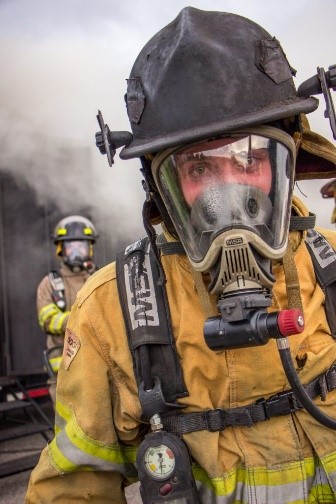 comprehension of their meaning, and the projection of their future status. For the purposes of Safety Stand Down week and firefighter safety, situational awareness involves knowing what is going on around us at any given time. It is the foundation for good decision making.
comprehension of their meaning, and the projection of their future status. For the purposes of Safety Stand Down week and firefighter safety, situational awareness involves knowing what is going on around us at any given time. It is the foundation for good decision making.
Firefighting involves responding to any number of dangerous and chaotic environments, all of which can be better controlled and deemed safer through the implementation of situational awareness. Achieving situational awareness relies on one’s ability to perceive, understand and analyze the environment around you in the context of what you are trying to accomplish. Experience plays positively into one’s ability to achieve situational awareness. Experienced firefighters, or any experienced professional, can achieve greater performance than most rookie or inexperienced workers.
It is beneficial to have seasoned, safety-conscious firefighters mentor the younger professionals in safety procedures to help firefighters solve problems, prevent bad outcomes and make better decisions in what can be high stress environments. Situational awareness improves through training and experience by learning to focus on key aspects of any given situation, knowing what distractions to avoid, and listening to commands and coordinating efforts.
For emergency responders, situational awareness involves cooperation from administrative leadership to all fire department personnel. The backbone of situational awareness includes:
- The proper implementation of an Incident Command System (ICS)
- Considering the situation and conditions present
- Applying experience to predict what future conditions may present
- Communication of orders to applicable personnel
It is vital to instruct and empower your responders to maintain situational awareness throughout the duration of an emergency event and maintain constant communications with staff to report back what might be dangerous or ever-changing conditions.
Fire departments with an adept sense of situational awareness have a clearer picture and better control of their functions, personnel, and outcomes, with a key focus on employee safety. When all responders develop and improve their situational awareness, through training and experience, the fire department can improve safety and minimize workplace injuries.
Reference the NFPA website for more details on the Stand Down initiative and situational awareness highlights by clicking here. Additional fire department safety information is available on the Comp Alliance website. www.compalliance.org
Reach out to Robert Blaisdell, Director of Loss Control for additional information, This email address is being protected from spambots. You need JavaScript enabled to view it., (518) 330-8591.
Tip # 3 - Physical Health and Safety Overview
Firefighting requires a high level of physical ability to meet the demands of the job. During the recognition of Safety Stand Down week,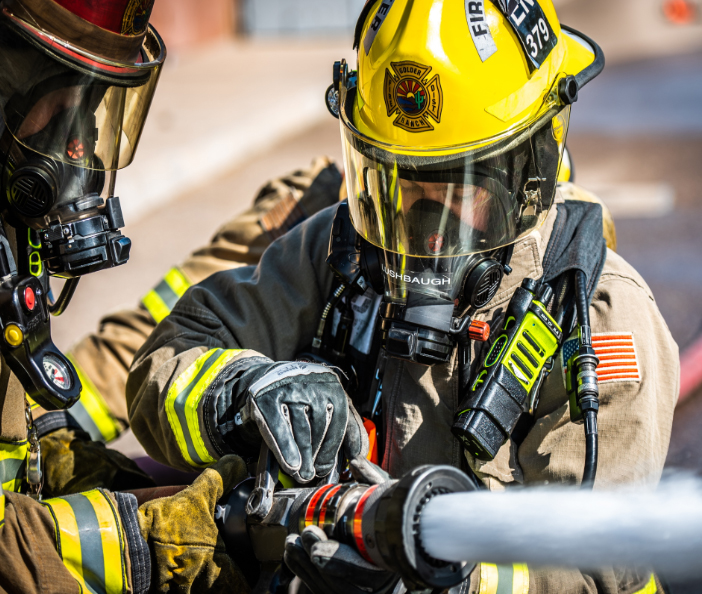 we look at the demands on physical health for the tasks of firefighting and focus on improvements as part of conditioning programs.
we look at the demands on physical health for the tasks of firefighting and focus on improvements as part of conditioning programs.
Firefighting can be a very dangerous profession requiring good physical condition to access and use heavy equipment, manage charged hoses, lift accident victims and manipulate around dangerous environments. An initial physical fitness screening test is completed when first joining the department to confirm proper fitness levels.
Firefighter health and safety is positively associated with proper physical fitness and routine medical screenings. Strength training can also be an essential part of a firefighter’s physical make-up and maintaining good health. Firefighters and first responders have an increased risk of cardiovascular disease, cardiac arrest, and cancer illness. Traditional risk factors, including hypertension, smoking, metabolic syndrome, diabetes, thyroid disorders and other conditions, can often be identified during regular health screenings and routine blood tests.
In addition to taking care of your medical conditions through annual exams, you must look at your physical conditioning level, keeping in mind all things body appropriate. Age, previous injuries, body type and job requirements all factor into what is an appropriate level of physical ability for a firefighter. Medical evaluations will give you a benchmark from which to begin accepting a realistic set of fitness goals and time-specific exercises. Initial medical exams provide an accurate picture of a firefighter’s baseline health and applying specific wellness programs can improve this medical picture year-to-year. Cardiac health, oxygen volume, stamina, endurance and strength can all be evaluated utilizing medical exams with testing geared specifically to the firefighter. Stress tests, body fat analysis, cholesterol and triglyceride ratios, and even sugar production are just a few of the values of these examinations, providing greater understanding into what makes a healthy firefighter.
Within the fire service, safety standards such as NFPA 1500 have been developed. There are also fitness standards, such as NFPA 1583 and a medical standard in NFPA 1582. Tests performed during the NFPA 1583 fitness evaluation include aerobic capacity, muscular strength (hands, arms and legs), body composition, muscular endurance, and flexibility. In addition, there are joint labor and management initiatives in the International Association of Fire Fighters and the International Association of Fire Chiefs Wellness-Fitness Initiative.
Improving the overall physical health and mental well-being of firefighters has been shown to improve work performance and reduce work-related injuries. Start a physical fitness routine today and improve your health through diet, exercise, improved sleep, weight training, stress reduction and medical examinations.
For further information on improving safety for fire department personnel, please reach out to the Comp Alliance and the Director of Loss Control, Robert Blaisdell, at This email address is being protected from spambots. You need JavaScript enabled to view it. or (518) 330-8591.
Tip # 4 - Turnout Gear
Firefighters require the very best in clothing and equipment to allow them to battle fires and respond to dangerous situations. During the National Safety Stand Down week, we take a look at the requirements of turnout gear, advances in technology and the purpose of donning specific personal protective gear for firefighters.
There is a lot to consider for the firefighter having to wear personal protective equipment (PPE), as it can be heavy, cumbersome and hot. The average weight of basic firefighter gear is around 45 pounds. This includes boots, pants, coat, gloves, hood and mask. However, the weight can vary greatly depending on what extra gear a firefighter decides to carry with them. In addition, gear gets heavier when it gets wet from the water used to extinguish a fire, from building sprinkler systems, or from natural elements like rain, snow and ice.
Turnout gear needs to provide proper fit and function. Studies have shown that improperly fitted gear can greatly compromise mobility and even effects the decision-making of firefighters. Reduced mobility means a firefighter works harder, gets tired easily and suffers dehydration and hypothermia more quickly. Regular use can put a lot of physical and mental stress on wearers. Current turnout gear must meet the safety standards of NFPA 1851 for selection, care and maintenance of firefighting protective ensembles. This standard also establishes a maximum service life of 10 years on gear, after it is placed into service, or sooner if rips, tears, defects or heat-related wear are found.
Proper function of turnout gear can be subject to the conditions for which it is needed. Firefighter situational awareness can contribute to what gear is necessary given a specific condition or response. It’s important to have the ability to assess the potential hazards and then select PPE that can best address those risks. This will help avoid a situation where the firefighter faces serious injury, dehydration or hyperthermia. The final call on PPE is made by the Chief, with an understanding by all that the safety and well-being of fire professionals at the scene is of utmost importance.
Consideration may be given to alternate turnout gear during non-firefighting operations as the “one size fits all” structure fire gear may exacerbate injury risk. Fire department personnel should conduct a review of PPE performance and use during a post-incident review session. Review information asking the following questions:
- What was the overall call assessment?
- What PPE was used?
- Was it effective?
- What PPE could have been used that wasn’t?
- What would be done differently given a similar call in the future?
The good news for fire crews is that there are ongoing attempts to improve firefighter gear by making it lighter and safer. The current weight and the health risks involved means that even just a couple of pounds decrease, or PPE sized effectively, could have a positive effect on worker safety. It all comes down to being able to use proper-fitting, lighter materials and perhaps fewer layers without compromising the protection against heat and flames.
For further information on firefighter safety, please reach out to the Comp Alliance and the Director of Loss Control, Robert Blaisdell, at This email address is being protected from spambots. You need JavaScript enabled to view it. or (518) 330-8591.
Tip #5 - Summer Exposures
Summer conditions, including extreme heat and humidity have a significant impact on the physical and mental well-being of fire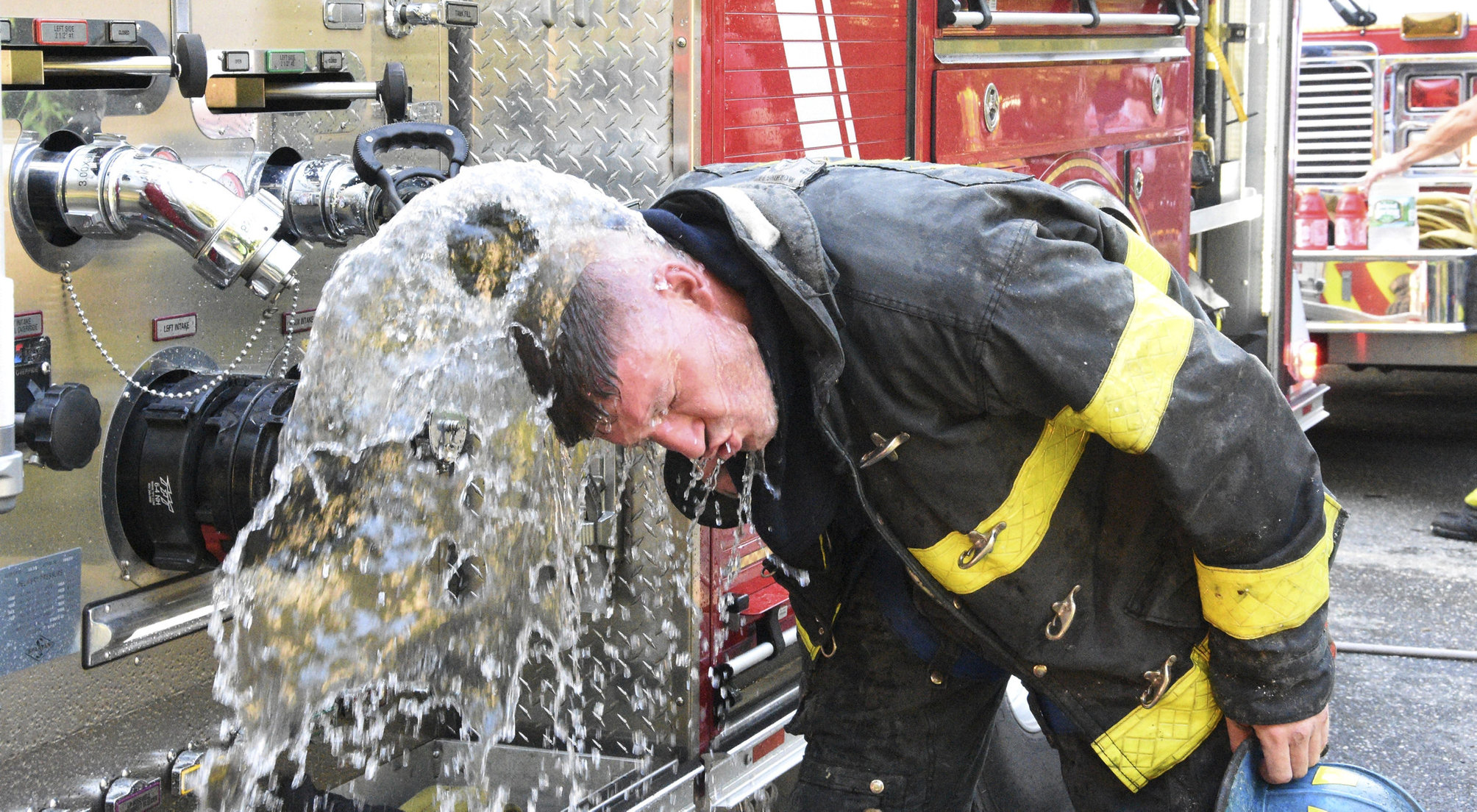 department personnel. Firefighters are increasingly susceptible to the dangers of excessive heat exposure due to their strenuous work in extreme heat, high-stressful situations, and heavy clothing and equipment. Firefighters can overcome these hazards and their associated health complications by understanding the risks and proper preparation for them beforehand.
department personnel. Firefighters are increasingly susceptible to the dangers of excessive heat exposure due to their strenuous work in extreme heat, high-stressful situations, and heavy clothing and equipment. Firefighters can overcome these hazards and their associated health complications by understanding the risks and proper preparation for them beforehand.
Heat related illness occurs when our bodies cannot dissipate heat quickly enough and our internal body temperature keeps rising. This will lead to workers experiencing thirst, irritability, heat rash, cramping, heat exhaustion or even heat stroke. Heat stroke is the most severe heat-related illness and workers may experience decreased work performance, mental dysfunction, unconsciousness, confusion, disorientation, and slurred speech. Fire departments should learn to recognize the symptoms of heat-related illness in themselves and fellow firefighters, and follow reporting protocols should such symptoms be observed.
Make certain personnel do not take “short cuts” with personnel protective equipment (PPE) while attempting to stay cool. Call for extra alarms and resources sooner rather than later. Summertime heat will require augmenting firefighters over a shorter time span, as frequent breaks will be necessary. Remember, help can always be returned if not needed. Wearing turnout gear for an extended time in extreme summer weather will reduce the body’s ability to cool itself by evaporation of perspiration.
Heat exhaustion can be severe and is also caused by an electrolyte imbalance. The firefighter suffering from heat exhaustion will exhibit profuse sweating, nausea, dizziness, headaches and an elevated body temperature. Removal from the environment into a cooler one with the administration of fluids will assist with recovery, but left untreated these conditions can lead to the more serious condition of heat stroke. The key to keeping firefighters safe during extreme heat conditions is hydration. Firefighters should be aggressively hydrating throughout the day prior to getting a call during hot, humid days. Water and other cold fluids containing electrolytes are the most important items that should be consumed to maintain proper hydration during these conditions. Soda or juices have been shown to slow absorption into the body and can have a detrimental effect in these situations. It is recommended that firefighters consume at least 1 quart of water per hour when working at these times. Fire apparatus should carry drinking water for its crew in case the necessary rehab resources are not on scene.
It is important during extreme summer weather to monitor fire personnel and make certain they stay hydrated and continuously operate in a safe manner.
For further information on safe work practices for fire department personnel, please reach out to the Comp Alliance and the Director of Loss Control, Robert Blaisdell, at This email address is being protected from spambots. You need JavaScript enabled to view it. or (518) 330-8591
Additional fire department safety information is available on the Comp Alliance website. www.compalliance.org
Reach out to Robert Blaisdell, Director of Loss Control for additional information, This email address is being protected from spambots. You need JavaScript enabled to view it., (518) 330-8591
National Police Week occurs every May, with May 15 proclaimed as National Peace Officers Memorial Day. The calendar week in which May 15 falls is National Police Week. This tradition was started in 1962 by President Kennedy, to pay special recognition to those law enforcement officers who have lost their lives in the line of duty and to encourage the safety of current police personnel. The 34th Annual Candlelight Vigil will be held on Friday, May 13, at 8:00 p.m. https://nleomf.org/memorial/programs/national-police-week-2022/candlelight-vigil/
May 15 falls is National Police Week. This tradition was started in 1962 by President Kennedy, to pay special recognition to those law enforcement officers who have lost their lives in the line of duty and to encourage the safety of current police personnel. The 34th Annual Candlelight Vigil will be held on Friday, May 13, at 8:00 p.m. https://nleomf.org/memorial/programs/national-police-week-2022/candlelight-vigil/
As the Comp Alliance insures many municipal police departments across New York State, we would like to acknowledge the hard work and hazardous conditions our law enforcement officers endure to provide us with safety and protection. In an effort to keep our member police departments safe, the Comp Alliance Risk Management department has put together daily safety tips, beginning May 16 and running through May 20, to remind them of the importance of maintaining safe work practices and preventing workplace injuries.
Daily Police Officer Safety Tips to include:
May 16 – Promote Officer Mental Health
May 17 – Night-time Hazards of Police Patrols
May 18 - Restraint and Arrest Techniques
May 19 – Improving Emergency Vehicle Operations
May 20 – Police Officer Ergonomics
Additional police safety information is available on the Comp Alliance website.
Please reach out to Robert Blaisdell, Director of Loss Control for additional information, This email address is being protected from spambots. You need JavaScript enabled to view it., (518) 330-8591
Safety Tip #1: Setting up a Temporary Work Zone Using MUTCD
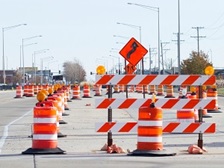
During National Work Zone Awareness Week, the Comp Alliance is recognizing the hazards of work zones with daily safety tips to keep employees safe. Our first tip focuses on how to properly set-up a temporary work zone. All work zones are different and offer unique challenges for flaggers and operators. Work zone administrators must be aware of these hazards and implement temporary traffic controls to avoid them so that workers can maneuver through the areas safely with equipment, and flaggers can adequately control traffic flow. Guidance from the Manual of Uniform Traffic Control Devices (MUTCD) for streets and highways must be followed for the proper set-up and operations within work zones. The manual is updated and published by the Federal Highway Administration (FHA). It is a compilation of national standards for all traffic control devices. This includes road markings, highway signs, and traffic signals. Highway and DPW Superintendents can review the latest MUTCD version from 2009 with 2012 updates by clicking here.
The MUTCD features work zone set-up recommendations on signage, positioning, markings, signals, flagger gear and responsibilities, low-volume road controls, and temporary traffic controls. For our Comp Alliance members, the information on the components of a temporary traffic control zone in part 6 would be most beneficial. It emphasizes the best practice for a typical road or lane closure situation. Utilizing the acronym ATBAT, you can identify the advanced warnings for drivers and pedestrians, workspace protections and work zone termination controls. ATBAT stands for the five sections of a work zone, including Advanced area, Transition, Buffer, Activity area, and Termination. Proper control devices installed for these five areas will help reduce accidents and injuries in work zones, regardless of their size and scope.
We recommend reviewing part 6 of the MUTCD before starting on any roadway project to ensure your municipality follows the manual and you are utilizing the best procedures to protect your work zone staff and the public.
Safety Tip #2: Importance of Flaggers - Controlling Traffic Flow
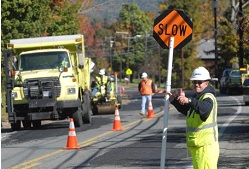
As part of the Comp Alliance’s recognition of National Work Zone Safety Week, we would like to remind all our members of the importance of flaggers who work these dangerous operations. In fact, the most vital part of any work zone operation is the flagger. They are responsible for the safety and protection of the workers as well as the public for safe navigation through and around a work zone.
Flaggers need annual training if they are new to the position. They should also undergo refresher training during the roadwork season. Training should be specific to the flagger position. They need to know where to be positioned, if the locations will change throughout the day, what devices they will need, what safety apparel to wear, what safety gear will be provided to them, and when and how breaks are handled. Breaks are important to keep flaggers fresh, alert and positively motivated to assist vehicle operators and pedestrians approaching work zones.
A good reference for appropriate flagger procedures can be found in the Manual of Uniform Traffic Control Devices (MUTCD) by clicking here. Members should review chapter 6E. This section goes over the use of hand signals, high-visibility safety apparel, locations to be stationed including vehicle sight distances, and hand signal devices.
Another important suggestion is to assign the right employees as your flaggers. Think about your staff and how they would deal with aggressive drivers and questions from the public. One reminder for flaggers is this – you are not a police officer. Should an individual refuse your direction and pass through a work zone unsafely, use your warning signal to workers of the hazard, take down the vehicle’s license plate number and a description of the driver. Report this information to a supervisor immediately. You may then resume your responsibilities of controlling traffic around the work site. The use of surveillance cameras at flagger locations can also help assist during the presence of unlawful or dangerous behaviors from the public.
As work zones are inherently dangerous for municipal workers, the use of trained, knowledgeable, and professional flaggers is vital. Remember to provide them with the tools they need to complete their jobs safely and effectively!
Additional highway department safety information is available on the Comp Alliance’s Municipal Academy. You can also check out Safety Source Online for important information on traffic control work zone safety, including courses SS21001AE and SS21003AE.
Safety Tip #3: PPE Required for Work Zones
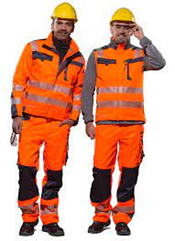
For the Comp Alliance’s third safety tip during National Work Zone Awareness Week, we want to acknowledge the use of required Personal Protective Equipment (PPE) to keep employees safe in work zones.
According to the U.S. Bureau of Labor Statistics (BLS), the most common event associated with deadly occupational injuries is when a worker is struck by a vehicle or mobile equipment at a road construction site. The agency reports that 609 workers died from injuries in work zones between 2011 and 2015. About 46% (280) of those employees were killed because of incidents involving vehicles. Most of these employees were fatally hit by cars or dump trucks. Of the 79 workers struck by an automobile, the automobile was moving forward in 72 cases. Of the 49 workers hit by a dump truck, the dump truck was backing up in 40 cases. As such, work zone “runovers” and “back-overs” are considered the greatest hazard to roadway construction workers and the leading cause of death.
Wearing high visibility clothing is one important strategy to help reduce the number of struck-by deaths at road construction sites. Required PPE for work zone operations includes reflective safety vests, which must be worn during construction projects that remain open to the traveling public. In accordance with the Manual on Uniform Traffic Control Devices (MUTCD) 6D.03 (2009), all workers within the right-of-way who are exposed either to traffic or to work vehicles and construction equipment within the work zone shall wear high-visibility safety apparel that meets the Performance Class 2 or 3 requirements of the ANSI/ISEA 107–2004. Click here to review the MUTCD.
Additional PPE required for work zone employees includes hard hats, which are to be worn for protection during any work activity that may expose workers to a head injury. Safety glasses must be worn during any work activity that may expose workers to eye injuries. Workers can protect their eyes with safety glasses that have side shields, goggles, and/or face shields. Safety toe boots/shoes are also required when working in areas where there is a danger of foot injuries due to falling or rolling objects, exposure to piercing the sole, or protection against electrical or chemical hazards. For hand protection, glove selection should be based upon the tasks to be performed and the performance and construction characteristics of the glove material. Chemical and/or electrical exposures within the work zone present their own unique hazards and will require additional, specific PPE regulations.
Additional highway department safety information is available on the Comp Alliance’s Municipal Academy. You can also check out Safety Source Online for important information on traffic control work zone safety, including courses SS21001AE and SS21003AE.
Safety Tip #4: What Equipment Operators Need to Know
The Comp Alliance’s 4th Safety Tip during National Work Zone Safety Awareness Week focuses on the importance of equipment operators and what they need to know to stay safe while on the job. Roadway work takes planning, training, equipment, and cooperation. Some keys to keeping the equipment operators within your temporary traffic zones safe include prioritizing planning for the work, as well as confirming staff and equipment are available for the full length of the project.
During a temporary work zone project, all applicable staff should be trained on their duties and on situational awareness when working within the proximity of traffic and utilize spotters when necessary. Employees should also be trained on the warning alerts which may be initiated by flaggers or other personnel, personal protective equipment (PPE) to be worn, and other factors in the work zone environment.
Operators in work zones may be required to wear hearing protection due to increased noise levels, and therefore may be unaware when notifications of hazards are present. An alternate warning system (visual, person-to-person) should be incorporated under these conditions. When incidents or accidents do occur within the work zone, the temporary suspension of work may be required as well as documenting the incident for all affected employees.
Protections for workers within the activity area of a stationary or long-term temporary work zone will likely require barriers, barrier vehicles or similar rigid devices. Buffer areas protect workers from vehicle traffic and may provide a recovery area for the placement of off-use equipment, and a vehicle roll-ahead safe zone may also be necessary. Staging areas for supplies and equipment shall also be protected from vehicle traffic so workers can access them safely. Night work will require additional lighting equipment and retro-reflective signage which present their own issues including overhead obstructions and illumination distancing.
Additionally, the equipment in a temporary work zone also needs to be equipped with safety devices. Backing alarms must be active on all work zone vehicles and heavy equipment, as backing is conducted routinely and can alert nearby workers of approaching vehicles. Traffic flow within a work zone must be planned and understood by all affected staff. Spotters should be used when multiple equipment may be moved throughout a work zone, and communications clear between all operators and spotters.
The protection of operators within a work zone, whether it is short-term or long-term is vital to the success of maintaining safe roadways in and around your community. Click here to review the NYS Work Zone Traffic Control Manual for more information.
Safety Tip #5: Work Zone Safety Best Practices in Review
Throughout National Work Zone Awareness Week, the Comp Alliance has released safety tips to consider that will protect employees in and around work zones. The federal government and New York State have developed safety manuals on work zones due to the high hazard environment they pose, and the frequency and severity of injuries sustained. The federal document is called the Manual on Uniform Traffic Control Devices (MUTCD). We encourage our members to review part 6 within this document. New York has adopted rules from the federal document and incorporated them into the Work Zone Traffic Control Manual, which you can view by clicking here. You can also review the MUTCD by clicking here.
All temporary traffic operations require a keen eye to identify potential hazards and implement controls to minimize the risk to employees working in these areas. This week, the Comp Alliance has written about various exposures and controls for them. Street and road supervisors must continuously monitor the work zone operations to confirm that staff are safe and consider additional safety measures when necessary. Additional controls may include the use of surveillance cameras to oversee flagger operations or utilize local law enforcement’s traffic incident management programs to enforce traffic violations around your work zones. Any police presence can positively control your work zones with respect to passing vehicles and pedestrian traffic.
Work zones can include short-term mobile activities, short duration, short-term stationary, intermediate-term, and long-term stationary operations. Each present unique scenarios which require different protective devices and controls.
As work zones present challenges for municipal street and road crews, routine safety meetings to review best practices for active work zones should be conducted. Work zones in place for more than a day require updating staff daily to understand the remaining work tasks and responsibilities, as they likely have changed from the previous day. Review any safety issues which may have presented themselves from earlier work and implement corrective measures.
Safety measures for staff can also include routine breaks, flagger change-outs, operator change-outs, hydration stations, as well as wearing proper clothing and sunscreen. Implementing these protective measures and reviewing the latest information from the federal government and New York State will help promote a positive safety culture for all employees in work zones.
Additional highway department safety information is available on the Comp Alliance’s Municipal Academy. You can also check out Safety Source Online for important information on traffic control work zone safety, including courses SS21001AE and SS21003AE.
For more information, contact Director of Loss Control Robert Blaisdell at This email address is being protected from spambots. You need JavaScript enabled to view it., (518) 330-8591.

In This Issue
- Comp Alliance Issues Safe Workplace Awards
- 2021 Annual Membership Report
- Using Our Updated Portal When Reporting A New Claim
- Comp Alliance Welcomes New Digital Marketing Coordinator
- Upcoming Virtual Training Seminars
- Featured Safety Source Topic – Back Injury Prevention
- Comp Alliance to Recognize National Police Week In May With Safety Tips
- Safety Tips For Firefighter Safety Stand Down Week In June
- Did You Know?
- Stay Informed
---------------------------------------------------------------------------------------------------------------------------------------------------------------------------------------------------------------------------------------------------------
Comp Alliance Issues Safe Workplace Awards
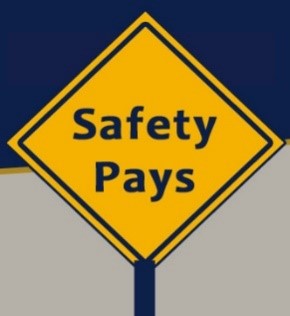 The Comp Alliance has distributed its Safe Workplace Awards for the June and July 2020-21 membership period. More than $500,000 was issued to 110 members who qualified by minimizing their loss experience throughout the year. As we conclude the second year of the Safe Workplace Awards program, we are honored to have distributed more than $2.3 million to over 500 municipal and school recipients.
The Comp Alliance has distributed its Safe Workplace Awards for the June and July 2020-21 membership period. More than $500,000 was issued to 110 members who qualified by minimizing their loss experience throughout the year. As we conclude the second year of the Safe Workplace Awards program, we are honored to have distributed more than $2.3 million to over 500 municipal and school recipients.
As the Comp Alliance builds on its foundation of predictable rates and financial stability, we have been able to give back to our members. The Safe Workplace Award provides a monetary award to members who meet specific loss experience criteria during their membership period, while incentivizing all members to improve workplace conditions and minimize workplace injuries. Together with our Loyalty Award program, every member of the Comp Alliance shares in our success as we continue to improve safety for municipal and school employees throughout New York State.
The mission of the Comp Alliance has always been to ensure our members are able to meet their long-term workers’ compensation liabilities while maintaining stable funding contributions, which has been made possible through the dedication of our trustees, and partnership with the Association of Towns of the State of New York and the New York State Conference of Mayors. The Comp Alliance has over 325 members, $44 million in annual funding contributions and a surplus of more than $66 million.
The Loyalty Award and Safe Workplace Award programs are not guaranteed. The Comp Alliance Board of Trustees evaluates these programs annually to determine continuation and eligibility. For more information on the Member Safe Workplace Award Program, please contact a Comp Alliance Marketing Manager or your insurance broker.
---------------------------------------------------------------------------------------------------------------------------------------------------------------------------------------------------------------------------------------------------------
2021 Annual Membership Report
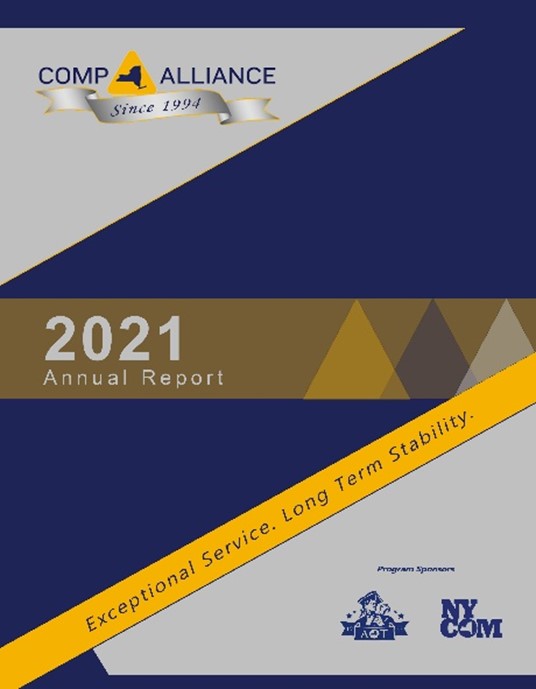 The Comp Alliance had another great year in 2021! We are happy to announce the continuation of our innovative programs that reward our members for their loyalty and safety. You can read more about these programs and initiatives in our 2021 Annual Membership Report.
The Comp Alliance had another great year in 2021! We are happy to announce the continuation of our innovative programs that reward our members for their loyalty and safety. You can read more about these programs and initiatives in our 2021 Annual Membership Report.
We are grateful for the support of our members and professional partners as we look forward to building upon our strong financial history and exceptional service in 2022 and beyond.
---------------------------------------------------------------------------------------------------------------------------------------------------------------------------------------------------------------------------------------------------------
Using Our Updated Portal When Reporting A New Claim
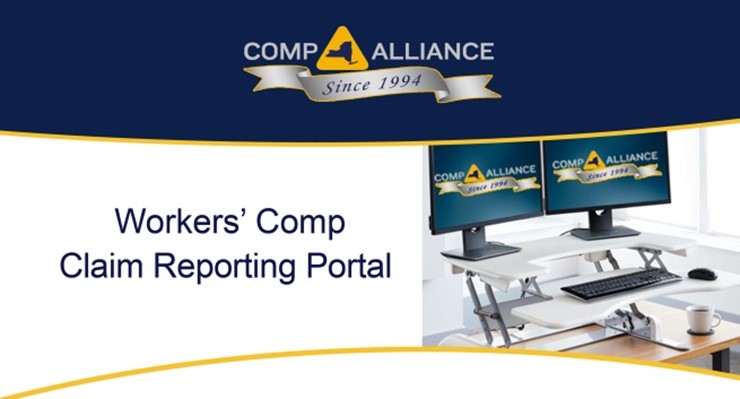 If you haven’t signed up to file your new claims through our updated Portal, we encourage you to do so!
If you haven’t signed up to file your new claims through our updated Portal, we encourage you to do so!
The portal allows the employer to file the new claim electronically and receive a permanent claim number as soon as you click the “send” button. While the claim is then being set up in our office, you should contact the employee and provide the number. We have often received feedback from employees that the doctor or hospital will not allow treatment to be rendered without a claim number. By using the portal to file your claims, your injured employee can receive medical treatment without delay. The portal also contains features allowing the employer to check on payments made to date, progress notes from the adjuster, and reserving information, as well as numerous additional features.
Besides an instant claim number, your employee will also benefit from having a Workers Comp Alliance ID card handy to provide to the initial medical provider. The injured worker should be assertive and make it clear upon arriving at the doctor’s office or hospital emergency room that the injury is job-related and to ensure the admittance person has the information provided on the WCA ID card. No end of problems, including misdirected medical bills, improper requests for treatment authorization, and inadequate reporting of the employee’s disability levels, will take place if the medical service provider tries to send the paperwork to the employee’s group health carrier. Should your office run low on the WCA ID cards, please contact Howard Bitner at This email address is being protected from spambots. You need JavaScript enabled to view it. and ask for a new supply of individualized cards. We should be able to fulfill your request within a week or two.
Another feature of our service that employers should be aware of at the onset of a new injury is our Instant Fill Prescription Card program. Our partner in administering the Comp Alliance prescription program, Preferred Medical, offers a supply of these cards to every employer in the Comp Alliance. The Instant Fill RX card allows the employee to obtain his or her initial prescription, which often is necessary on the same day of the accident, without the claim being set up in our office, or even reported to us yet by the employer. This is a temporary card that expires within 14 days. When we receive the claim in our office, we then download the basic claim information to Preferred Medical, which then sends out a permanent RX card to the employee to replace the expiring one. We suggest that the employer not distribute these cards to the general employee population but provide a supply to each front-line supervisor or department head to distribute as necessary when an injury occurs. Should you need a new supply of these cards, please don’t hesitate to contact us.
The onset of the claim is often the most important, and of course the most traumatic stage of the claim. We want your employees to be assured they will have as few problems as possible obtaining a claim number, receiving medical treatment, and obtaining necessary prescriptions when they are injured. By making use of the portal and ensuring the employee has the WCA ID card and First Fill RX card, the employer will be assisting in meeting that goal.
Comp Alliance members who have not yet registered can receive login credentials, more information and access instructions by contacting Howard Bitner at This email address is being protected from spambots. You need JavaScript enabled to view it..
---------------------------------------------------------------------------------------------------------------------------------------------------------------------------------------------------------------------------------------------------------
Comp Alliance Welcomes New Digital Marketing Coordinator
The Comp Alliance is excited to introduce our new Digital Marketing Coordinator, Samantha Marciano.
Samantha joins us after writing and producing content for WNBC-TV (News 4 New York) and WNYW-TV (Fox 5 News) in NYC. Samantha has covered some notable local and national news in her 17+ year career. In 2021, Samantha and her WNBC-TV team won the coveted Alfred I. duPont-Columbia University award for journalism excellence.
Samantha has also been honored with an Emmy, as well as Associated Press and Edward R. Murrow awards for her work. Samantha has written and produced content for millions of viewers/readers. She is looking forward to producing great content for the Comp Alliance and its members.
Samantha looks forward to meeting our Comp Alliance members at an upcoming conference. Please feel free to reach out to her with any digital marketing suggestions at This email address is being protected from spambots. You need JavaScript enabled to view it..
---------------------------------------------------------------------------------------------------------------------------------------------------------------------------------------------------------------------------------------------------------
Upcoming Virtual Training Seminars
The Comp Alliance has several Live Virtual Video Conference Trainings scheduled for our members throughout the months of April, May, and June.
PESH-mandated topics of Workplace Violence, Right-To-Know – Chemical Safety, and Blood-Borne Pathogens will be covered.
Upcoming Schedule
4/20 - 10:00 a.m. - Noon
4/25 - 10:00 a.m. - Noon
4/28 - 10:00 a.m. - Noon
5/2 - 10:00 a.m. - Noon
5/5 - 10:00 a.m. - Noon
5/12 - 10:00 a.m. - Noon
5/16 - 10:00 a.m. - Noon
5/18 - 5:00 p.m. - 7:00 p.m.
5/19 - 10:00 a.m. - Noon
5/23 - 10:00 a.m. - Noon
5/26 - 1:00 p.m. – 3:00 p.m.
6/6 - 10:00 a.m. - Noon
6/7 - 10:00 a.m. - Noon
6/13 - 10:00 a.m. - Noon
6/15 - 5:00 p.m. - 7:00 p.m.
6/16 - 10:00 a.m. - Noon
6/20 - 10:00 a.m. - Noon
6/23 - 1:00 p.m. - 3:00 p.m.
6/27 - 9:00 a.m. – 11:00 a.m.
6/29 - 10:00 a.m. - Noon
The Comp Alliance also has scheduled several virtual training programs covering the mandatory PESH-required topic of HAZWOPER. This awareness level seminar is required for municipal employees who may be the first upon a hazardous waste emergency on-site or off-site. Recommended for highway, department of public works, water and sewer and sanitation departments.
Upcoming HAZWOPER Schedule
5/13 - 8:00 a.m. - 8:30 a.m.
5/19 - 8:00 a.m. - 8:30 a.m.
5/20 - 8:00 a.m. - 8:30 a.m.
6/7 - 8:00 a.m. - 8:30 a.m.
6/10 - 8:00 a.m. - 8:30 a.m.
6/17 - 8:00 a.m. - 8:30 a.m.
Email Robert Blaisdell at This email address is being protected from spambots. You need JavaScript enabled to view it. to register for any of these training sessions. Attendance is limited.
Please continue to check your email and the Comp Alliance website https://www.compalliance.org/ for additional dates later in the year.
---------------------------------------------------------------------------------------------------------------------------------------------------------------------------------------------------------------------------------------------------------
Featured Safety Source Video – Back Injury Prevention
The Comp Alliance’s continued partnership with Safety Source, a leader in quality, online safety training video content, has enabled many of our members to supplement and/or incorporate Safety Source videos on-demand into their safety training program. Safety Source is constantly adding to their video library, as well as updating several topics that municipalities and school districts can utilize to train and educate their staff.
Strain or injury from lifting is one of the leading loss causes for our municipal and school members. With nearly 20 helpful videos dedicated to Back Injury Prevention, you are sure to find one that will help create a safer work environment for you and your staff.
The Safety Source Library is available by clicking here. If you are not yet registered for access to this diverse video library, please contact This email address is being protected from spambots. You need JavaScript enabled to view it..
---------------------------------------------------------------------------------------------------------------------------------------------------------------------------------------------------------------------------------------------------------
Comp Alliance To Recognize National Police Week In May With Safety Tips
 National Police Week
National Police Week
In 1962, President Kennedy proclaimed May 15 as National Peace Officers Memorial Day and the calendar week in which May 15 falls as National Police Week. National Police Week pays tribute to law enforcement officers who have died in the line of duty for the safety and protection of others. To honor all our members, their law enforcement officers, and those police officers who have lost their lives serving their local community, the Comp Alliance will recognize National Police Week.
We will be posting Police Department Safety Tips on our website daily starting Monday, May 16 through Friday, May 20. These helpful tips will also be emailed to all program members.
---------------------------------------------------------------------------------------------------------------------------------------------------------------------------------------------------------------------------------------------------------
Safety Tips For Firefighter Safety Stand Down Week In June
 Firefighter Safety Stand Down
Firefighter Safety Stand Down
Taking place each year during the third full week of June, Safety Stand Down highlights critical safety, health, and survival issues for fire and emergency services personnel. Departments are asked to suspend all non-emergency activities during the week to focus their attention on safety and health education efforts. A week is provided to ensure that all duty shifts can participate.
The 2022 Safety Stand Down theme is “Situational Awareness: The Foundation for Good Decision Making.”
This theme focuses on the importance of situational awareness during response operations to help firefighters solve problems, prevent bad outcomes, and make better decisions in high stress environments. Five daily focus areas will highlight situational awareness during different incident types: structure fires, EMS, wildland incidents, roadway response, and acts of violence.
This year, to assist our fire departments with their safety efforts, the Comp Alliance will post Firefighter Safety Tips each day on our website from Monday June 20 through June 24. These tips will also be emailed to all program members.
---------------------------------------------------------------------------------------------------------------------------------------------------------------------------------------------------------------------------------------------------------
Did You Know?
 Workers’ compensation was an idea first implemented in ancient Sumer (now known as the Republic of Iraq) over 4,000 years ago. It was part of the Code of Ur-Nammu, which was written on tablets between 2100 B.C. and 2050 B.C. in Mesopotamia. The ancient law contains a section that instituted monetary compensation for specific injuries to workers’ body parts. The first known version of the Code of Ur-Nammu is now on display at the Istanbul Archaeology Museums located in Istanbul, Turkey. It is considered one of the oldest surviving legal documents in the world.
Workers’ compensation was an idea first implemented in ancient Sumer (now known as the Republic of Iraq) over 4,000 years ago. It was part of the Code of Ur-Nammu, which was written on tablets between 2100 B.C. and 2050 B.C. in Mesopotamia. The ancient law contains a section that instituted monetary compensation for specific injuries to workers’ body parts. The first known version of the Code of Ur-Nammu is now on display at the Istanbul Archaeology Museums located in Istanbul, Turkey. It is considered one of the oldest surviving legal documents in the world.
---------------------------------------------------------------------------------------------------------------------------------------------------------------------------------------------------------------------------------------------------------
The Comp Alliance strives to keep members informed of the latest industry and program news. Please visit us at www.compalliance.org for the latest news, updated events calendar, safety articles, safety bulletins and more.
|
|
Upcoming Events
| No events |


